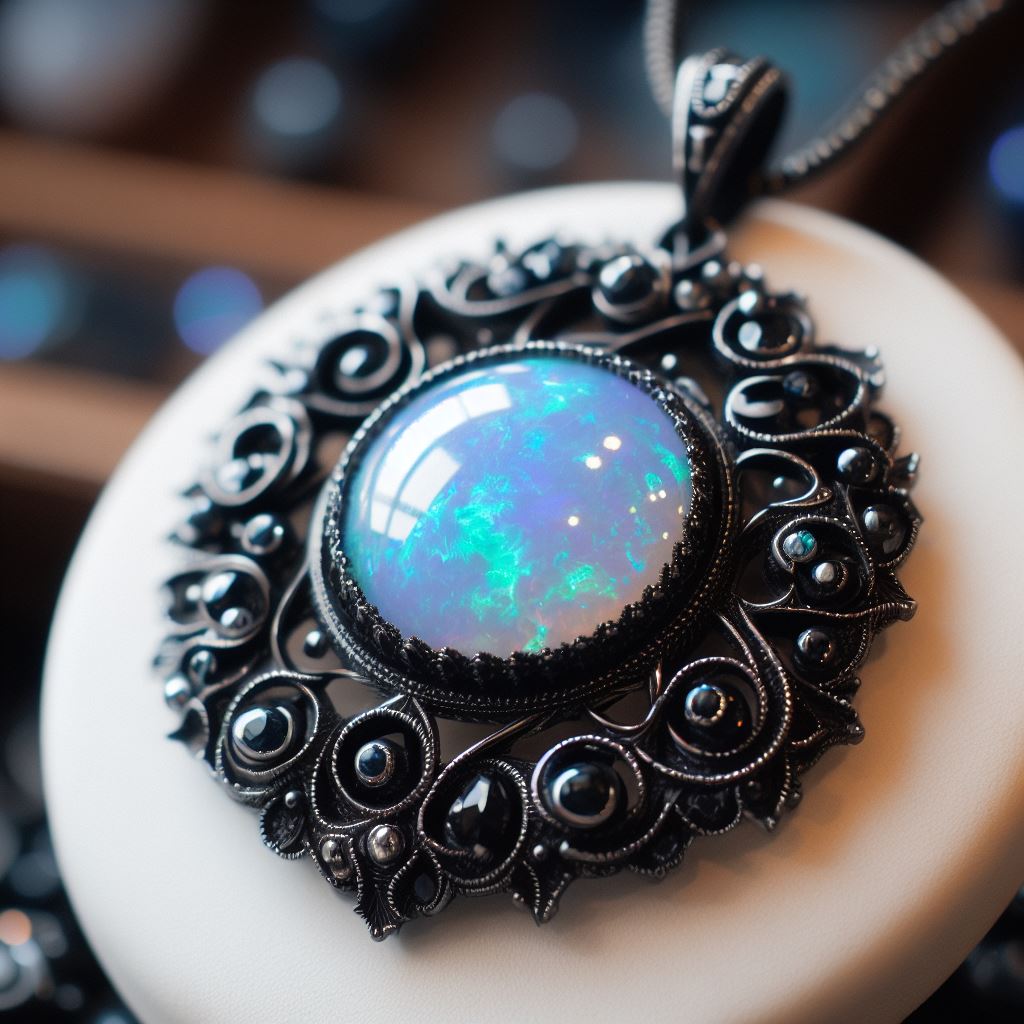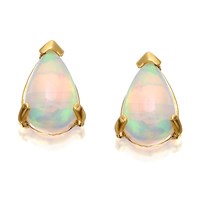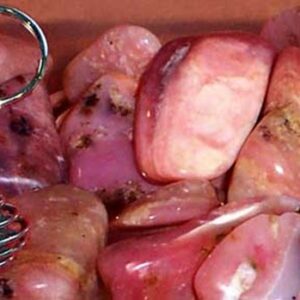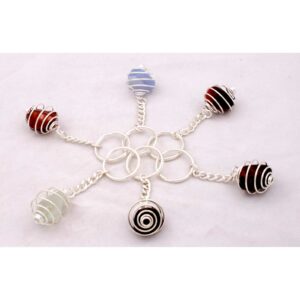October’s Birthstone: Opal, the mesmerizing gemstone, is renowned for its unique play of colour. With a diverse range of hues, each Opal boasts a characteristically dazzling display, attesting to its uniqueness.
Opal is also the Gemstone for the 17th and 34th Wedding Anniversary.
Another Gemstone associated with October is Tourmaline.
Also associated with October is the flower Rosemary, known as a symbol of remembrance. Rosemary is a rich source of antioxidants and anti-inflammatory compounds, which helps to boost the immune system.
What Colour Are Opal’s?
Opals come in a variety of colours. The most well-known characteristic of opals is their play-of-colour, which refers to the vibrant flashes of different colours that can be seen when the stone is viewed from different angles.
These colours can include shades of red, orange, yellow, green, blue, and purple. The body colour of an opal can range from white to black, with various shades of grey and brown in between. In addition to the play-of-colour, opals can also display their own base colour, which can be transparent, translucent, or opaque.
Common opals, which do not possess the play-of-colour, can be found in a spectrum of colours including pink, yellow, orange, green, blue, and purple.
What Are The History And Symbolism Of October’s Birthstone: Opal?
October’s birthstone, opal, has a fascinating history and symbolism. Opals have been cherished for centuries and are associated with various beliefs and meanings.
In ancient times, opals were highly regarded and coveted. The ancient Greeks believed that opals bestowed their owners with the gift of prophecy and protected them from disease. They were also associated with hope, purity, and truth in European cultures.
Opals have been linked to royalty and good luck throughout history. For example, in the Middle Ages, opals were believed to possess the power to grant the wearer invisibility.
Queen Victoria absolutely adored Opals, she made them very popular in the late 20th Century.
Opals have also been associated with the changing of seasons. Some theories suggest that the name “opal” originates from the Greek word “opallios,” meaning “to see a change in colour” . This reflects the stone’s colourful appearance, covering every shade of the most sought-after gems according to Pliny the Elder in ancient Rome.
It is believed that Opals are associated with love and passion and have healing strengths especially as a good elixir for the eyes and renewing skin cells.
What Are The Properties of Opal’s
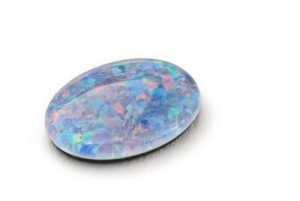
Opals have specific properties that make them unique and captivating gemstones.
Lustre: Raw opals have a waxy and dull lustre that can be polished to achieve a vibrant shine.
Translucency: Opals are usually translucent or transparent, allowing light to pass through them.
Hardness: On the Mohs scale of mineral hardness, opals measure between 5 and 6, indicating that they are relatively soft stones.
Chemical Composition: The chemical formula of opal is SiO2 · nH2O. It is a mineraloid composed mainly of hydrated silica.
Where Do Opal’s Come From?
Opals are found in various locations around the world. Australia is the primary source of opals, producing about 95% of the world’s supply. The Australian opal fields, particularly in the states of South Australia, New South Wales, and Queensland, are renowned for their opal deposits.
Opals are also found in other countries such as Mexico, Brazil, the United States (particularly Nevada and Idaho), Ethiopia, and Indonesia. Each region has its own unique characteristics and variety of opals.
It’s worth noting that the specific conditions required for opal formation, such as the presence of silica-rich solutions and voids in the host rocks, are not present in every location. Therefore, opals are relatively rare gemstones.
Gift Ideas
Opals make beautiful and unique gifts due to their vibrant play-of-colour and their association with various meanings and symbolism. Here are some opal gift ideas to consider:
Opal Jewellery: Opal jewellery is a popular choice for gifting. It can include opal rings, necklaces, earrings, bracelets, cufflinks, tiepins or even opal-set watches. The recipient can enjoy the beauty and symbolism of opals every day.
Opal Art or Home Décor: Opal-themed art pieces, sculptures, or home décor items can be a unique and creative gift. Opal-inspired artwork, such as paintings or prints, can brighten up any space and bring a touch of elegance.
-
 9ct Gold Pear Shaped Opal Stud Earrings£69.99
9ct Gold Pear Shaped Opal Stud Earrings£69.99 -
 Opal Keychain£5.99
Opal Keychain£5.99 -
 Gemstone Key ring Charm£5.99 – £9.95
Gemstone Key ring Charm£5.99 – £9.95
Whatever gift you choose, it’s important to consider the recipient’s personal style, preferences, and any specific occasions or milestones you’re celebrating. Opals are versatile gems that can be enjoyed by people of all ages and genders.
How To Care And Clean Opal Jewellery.
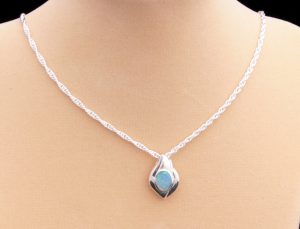
Opal jewellery is delicate and requires gentle care to preserve its beauty and prevent damage. Here are some tips for caring and cleaning opal jewellery:
Avoid Harsh Chemicals: Opals are sensitive to chemicals, so it’s important to avoid exposing them to harsh chemicals such as household cleaners, perfumes, lotions, and hairsprays. These substances can dull or damage the opal’s surface.
Remove Jewellery During Activities: Take off your opal jewellery when engaging in activities that could potentially damage it, such as sports, household chores, or swimming. Opals are relatively soft gemstones, and they can be scratched or chipped if not handled carefully.
Store Properly: When not wearing your opal jewellery, store it separately from other pieces to prevent scratches. Keep it in a soft pouch or a lined jewellery box, away from direct sunlight and extreme temperatures. Since opals contain water, storing them in a dry place and protecting them from dehydration is important.
Gentle Cleaning: To clean opal jewellery, use a soft, lint-free cloth or a mild jewellery cleaning solution specifically designed for delicate gemstones. Do not use ultrasonic cleaners, steam cleaners, or harsh chemicals, as they can damage the opal. Gently wipe the surface of the opal and the metal setting to remove any dirt or oils.
Final Thoughts
In summary, opal gifts offer a timeless and enchanting beauty that is sure to delight and inspire the recipient, making them a thoughtful and cherished addition to any jewellery collection.
As we said at the beginning this is the essentials about October’s Birthstone: Opal, if you want the internet equivalent of the Haynes manual on opal, check Wikipedia’s page on Opal .

